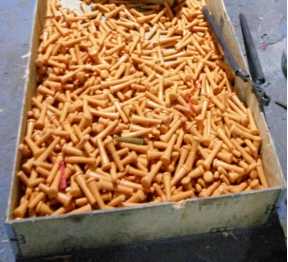Efficient Poultry Feed Pellet Production Machine for Enhanced Livestock Nutrition and Growth
Aug . 10, 2024 16:45 Back to list
Efficient Poultry Feed Pellet Production Machine for Enhanced Livestock Nutrition and Growth
The Importance of Pellet Making Machines for Poultry Feed
In the modern agricultural landscape, efficient feed production plays a crucial role in ensuring the health and productivity of poultry. As the demand for poultry products continues to rise globally, poultry farmers are increasingly looking for innovative ways to enhance their feed quality and reduce costs. One of the most effective solutions to this challenge is the use of pellet making machines for poultry feed. This article examines the benefits and operational aspects of these machines in the poultry industry.
Enhanced Nutritional Value
One of the most significant advantages of using pellet making machines is the improvement in the nutritional value of feed. Pelleting involves compressing the feed ingredients into small, uniform pellets, which can make it easier for poultry to digest. This process not only helps in binding various components of the feed but also allows for the incorporation of a more diverse range of ingredients. Nutrients such as vitamins, minerals, and proteins can be accurately distributed, ensuring that poultry receive a balanced diet that supports their growth and production.
Improved Feed Efficiency
Another notable benefit of pelleted feed is its impact on feed efficiency. Studies have shown that pelleted feed can lead to better feed conversion rates, meaning that poultry can achieve optimal weight gain with less feed. This efficiency is crucial for farmers as it translates to lower feed costs and increased profitability. Additionally, the uniform size of pellets helps in reducing feed wastage, as chickens are less likely to sift through the feed and discard smaller particles.
Reduced Disease Risk
Feeding poultry with raw ingredients can sometimes expose them to pathogens and harmful microorganisms. Pellet making machines can help mitigate this risk. The high temperatures and pressures used in the pelleting process can effectively kill many pathogens, thus producing healthier feed. This results in enhanced flock health and can lead to reduced medication costs for disease prevention and treatment.
pellet making machine for poultry feed

Convenience and Labor Savings
The use of pelleted feed also offers significant advantages in terms of convenience and labor efficiency. Handling and distributing pellet feed is generally easier compared to loose feed, which can be dusty and harder to manage. Additionally, a pellet making machine automates the production process, reducing manual labor and allowing farmers to focus on other important aspects of poultry management.
Customization and Scalability
Modern pellet making machines provide flexibility and customization options that cater to the specific needs of poultry farmers. Operators can adjust the machine settings to produce pellets of various sizes and densities depending on the age and species of the poultry being raised. This customization ensures that farmers can provide the ideal feeding solution for their birds, optimizing growth and production.
Moreover, these machines are scalable, making them suitable for both small-scale farms and large commercial operations. Farmers can start with a smaller machine and gradually scale up their production capacity as their business grows.
Conclusion
In summary, pellet making machines for poultry feed are an invaluable addition to modern poultry farming. By enhancing nutritional value, improving feed efficiency, reducing disease risks, and offering convenience, these machines empower farmers to meet the increasing demands of the poultry market effectively. As technology continues to advance, the role of pellet making machines in ensuring sustainable and profitable poultry farming is likely to become even more prominent. Investing in such machinery is not just a step towards operational efficiency but a commitment to better poultry health and productivity.
-
Hot Sale 24 & 18 Door Rabbit Cages - Premium Breeding Solutions
NewsJul.25,2025
-
Automatic Feeding Line System Pan Feeder Nipple Drinker - Anping County Yize Metal Products Co., Ltd.
NewsJul.21,2025
-
Automatic Feeding Line System Pan Feeder Nipple Drinker - Anping County Yize Metal Products Co., Ltd.
NewsJul.21,2025
-
Automatic Feeding Line System - Anping Yize | Precision & Nipple
NewsJul.21,2025
-
Automatic Feeding Line System - Anping Yize | Precision & Nipple
NewsJul.21,2025
-
Automatic Feeding Line System-Anping County Yize Metal Products Co., Ltd.|Efficient Feed Distribution&Customized Animal Farming Solutions
NewsJul.21,2025






